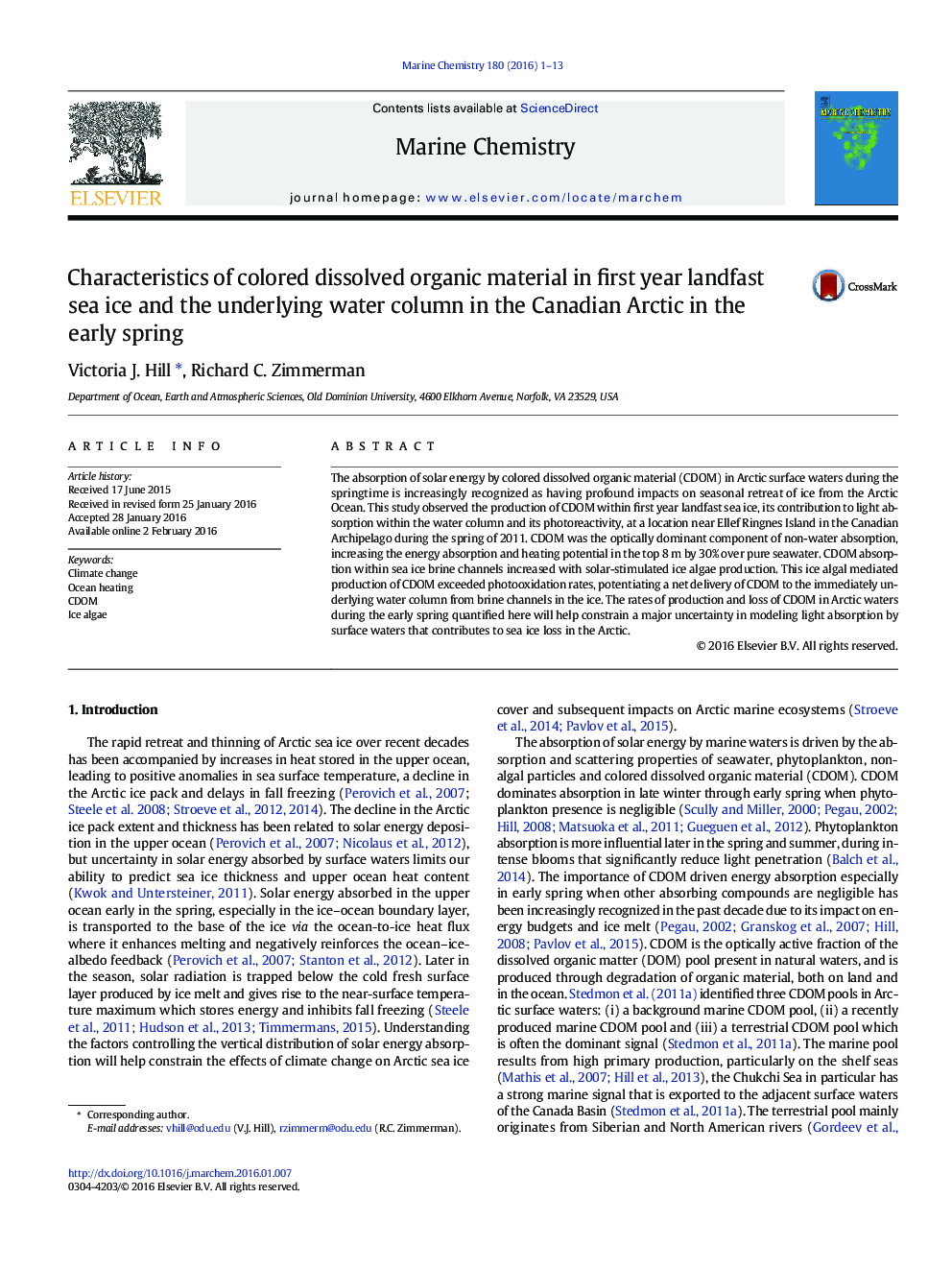| Article ID | Journal | Published Year | Pages | File Type |
|---|---|---|---|---|
| 7699177 | Marine Chemistry | 2016 | 13 Pages |
Abstract
The absorption of solar energy by colored dissolved organic material (CDOM) in Arctic surface waters during the springtime is increasingly recognized as having profound impacts on seasonal retreat of ice from the Arctic Ocean. This study observed the production of CDOM within first year landfast sea ice, its contribution to light absorption within the water column and its photoreactivity, at a location near Ellef Ringnes Island in the Canadian Archipelago during the spring of 2011. CDOM was the optically dominant component of non-water absorption, increasing the energy absorption and heating potential in the top 8Â m by 30% over pure seawater. CDOM absorption within sea ice brine channels increased with solar-stimulated ice algae production. This ice algal mediated production of CDOM exceeded photooxidation rates, potentiating a net delivery of CDOM to the immediately underlying water column from brine channels in the ice. The rates of production and loss of CDOM in Arctic waters during the early spring quantified here will help constrain a major uncertainty in modeling light absorption by surface waters that contributes to sea ice loss in the Arctic.
Keywords
Related Topics
Physical Sciences and Engineering
Chemistry
Chemistry (General)
Authors
Victoria J. Hill, Richard C. Zimmerman,
